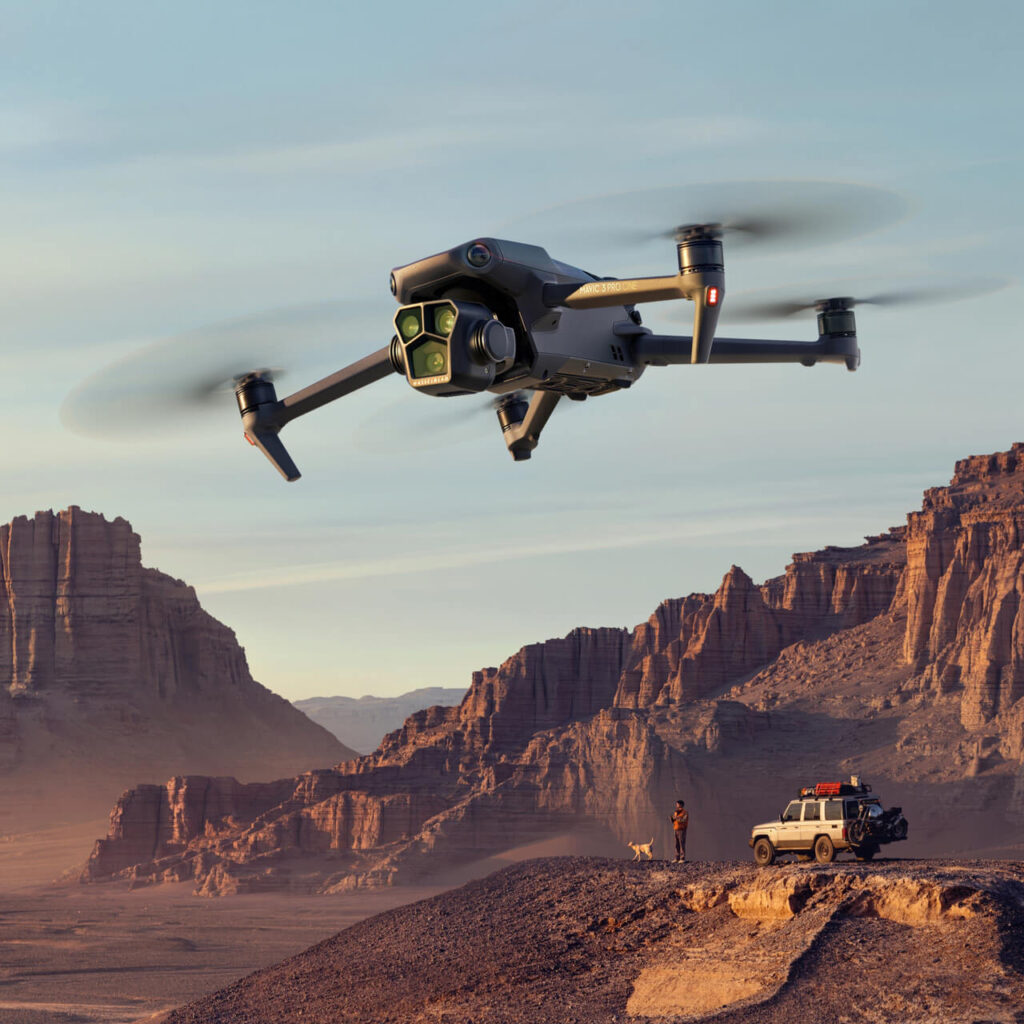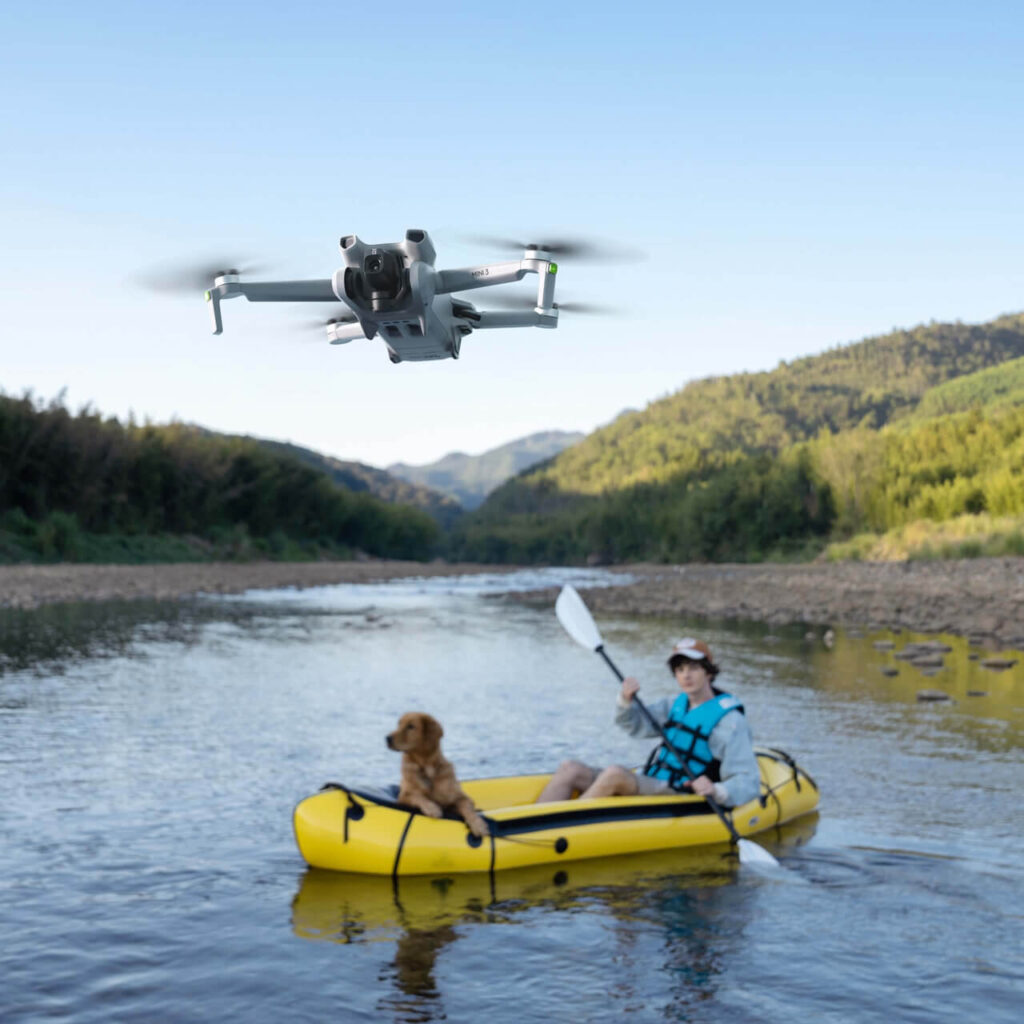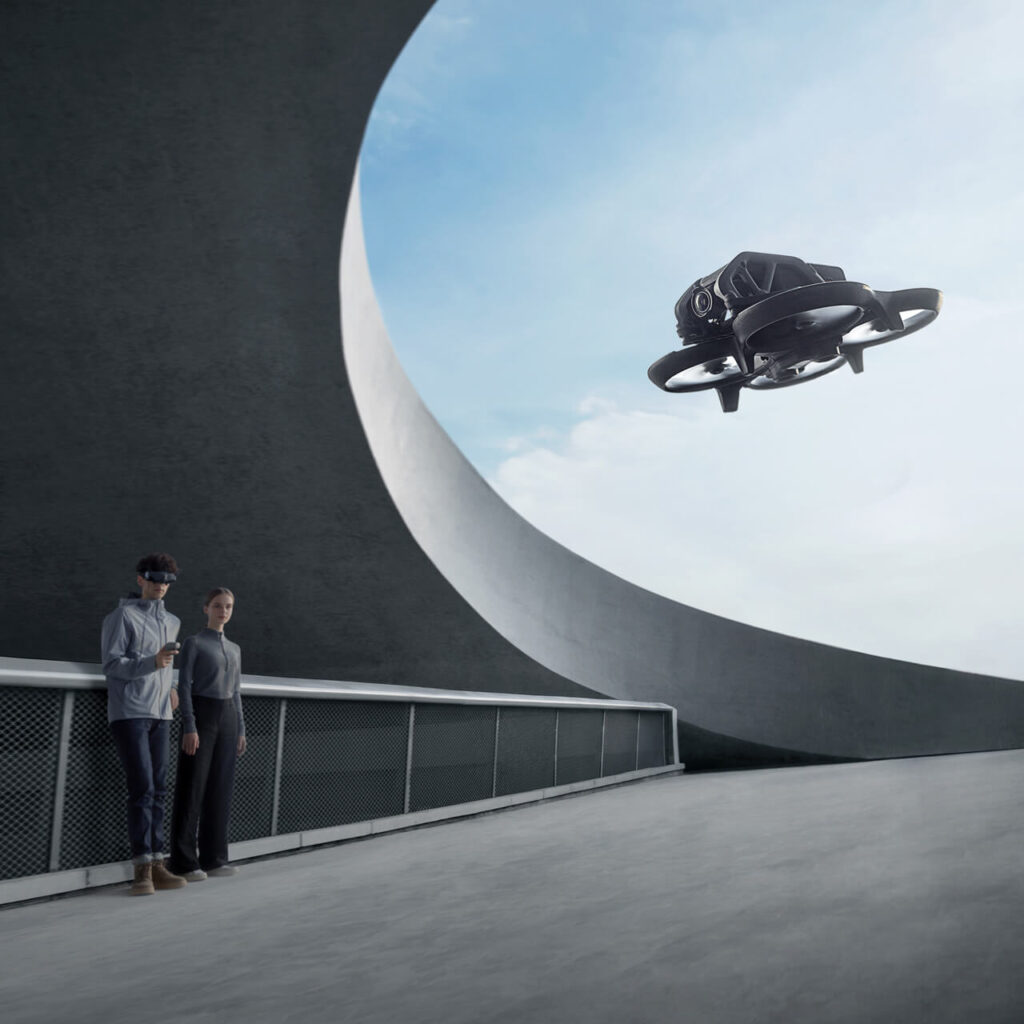If you’re thinking of buying your first drone in India, setting a budget of ₹50,000 is a smart move. At this price, you’re not overspending, and you’re also not settling for low-quality features. It gives you access to well-built drones that offer good stability, HD cameras, and beginner-friendly controls—perfect for new users and growing content creators.
For someone who’s just stepping into aerial photography or vlogging, this price point covers models that strike a balance between ease of use and performance. You’ll find compact drones with intelligent flight modes, solid battery life, and even decent wind resistance. Whether you’re planning to shoot scenic landscapes, travel videos, or just want to learn how to fly safely, there are several options that fit well within this budget.
Before we dive into the list of best drones under ₹50,000, it helps to understand what the market looks like. If you’re curious about which drone manufacturing companies in India are leading the industry right now, check out our in-depth post on that. It covers major brands, including DJI, Autel, IdeaForge, and others you’ll frequently come across when browsing options.
Also, if you’re wondering whether owning a drone means you need a license, or how drones are being used in different fields like agriculture, content creation, or industrial surveying, we’ve linked some helpful reads below that give you the full picture.
What Features Can You Expect in Drones Under ₹50,000?
When you’re shopping for drones under ₹50,000 in India, it’s important to know what kind of features this budget typically includes. While you won’t get every premium function found in high-end models, you’ll still find drones that are reliable, camera-ready, and user-friendly.
Here’s a breakdown of what to expect:
1. Camera Quality
Most drones in this range come with cameras that can shoot in 1080p Full HD, and some models even offer 2.7K resolution. While they may not deliver cinematic-level footage, they are more than capable for travel vlogs, basic aerial photography, and YouTube videos.
- Look for drones with built-in stabilization (like a 2-axis gimbal or EIS).
- Some models offer FPV (First Person View) streaming through a mobile app.
2. Flight Time
You can expect a flight time of 20 to 30 minutes per battery. It’s good enough for practicing, short shoots, and learning how to manage battery usage mid-flight.
- Many drone kits in this budget come with extra batteries, increasing your total airtime.
- Charging times are usually around 60 to 90 minutes.
3. Range and Connectivity
Most drones in this category offer a control range between 500 meters to 2 kilometers, depending on the brand and technology used. Wi-Fi connectivity and app-based control are quite common.
- Drones using proprietary controllers often perform better than app-only options.
- Interference in urban areas might reduce range slightly.
4. GPS and Intelligent Flight Modes
Some mid-range drones now include GPS support, which unlocks helpful features like Return to Home (RTH), Follow Me, Waypoints, and Orbit modes.
- These features make flying easier for beginners and add creative possibilities for content creators.
- GPS improves stability in outdoor environments.
5. Build Quality and Portability
Many beginner drones under ₹50,000 are made with lightweight but durable materials. You’ll also find a good number of foldable drones, which are easier to carry for travel or outdoor shoots.
- Propeller guards and extra propellers are often included.
- Compact designs make them ideal for creators on the move.
Top Drones Under ₹50,000 in India (2025)
Whether you’re starting your content creation journey or want a reliable flying companion for travel and exploration, here are some of the best drones you can consider under ₹50,000. These models offer excellent value without compromising on core features like camera quality, flight time, and portability.
We’ve handpicked these drones based on user reviews, beginner-friendliness, and availability through trusted sellers like Jetayu Gadgets, who offer drones from top brands such as DJI, Autel, Parrot, and others.
1. DJI Mini 2 SE
A favorite for first-time users, the Mini 2 SE is lightweight, reliable, and easy to fly.
- Camera: 2.7K video resolution, 12 MP photos
- Flight Time: Up to 31 minutes
- Range: 6 to 10 km with OcuSync 2.0
- Special Features: GPS, QuickShots, Return to Home
Best for: Beginners and hobbyist creators
Want to compare this with the newer version? Check out our blog on DJI Mini 3 vs Mini 4 Pro – Which Combo Is Right for You?
2. Autel EVO Nano
This compact drone comes with intelligent flight modes and a better low-light camera, making it ideal for short video shoots.
- Camera: 4K video, 48 MP photos
- Flight Time: Around 28 minutes
- Special Features: Obstacle detection, HDR, auto-tracking
Best for: Creators who want cinematic control on a tighter budget
Explore more options like this in our blog Best Drone Cameras in India (2025): Top Models, Prices & Buyer’s Guide
3. SYMA X500 Pro
If you’re testing the waters and want something ultra-budget-friendly before upgrading, this is a solid pick in drone.
- Camera: 1080p HD
- Flight Time: 20 minutes
- Range: Up to 200 meters
- Special Features: GPS follow-me, headless mode, gesture control
Best for: Students and complete beginners
If you’re just starting out, don’t miss our post on Is Buying a Drone Enough to Start My Journey as a Content Creator?
4. Enzo X1 Pro
One of the newer models in the Indian market, Enzo X1 Pro is compact and app-controlled.
- Camera: 2K with basic stabilization
- Flight Time: 22–25 minutes
- Special Features: Follow mode, gesture photo, VR view
Best for: Travel vloggers and casual weekend flyers
Thinking of upgrading later? Learn more in Can I Fly My Drone Freely or Do I Need a License? Understand the Rules
How to Choose the Right Drone for Your Needs (Beginner Tips)
If you’re new to drones, it’s easy to get overwhelmed by specs, features, and price tags. But choosing the right drone under ₹50,000 doesn’t have to be confusing. Here’s how to break it down and find what works best for your purpose.
1. Define Your Use Case First
Before anything else, ask yourself: What do I need the drone for?
- For travel and vlogging: Prioritize lightweight drones with stable video quality
- For YouTube and content creation: Look for drones with 4K or at least 2.7K resolution
- For learning and experimenting: Choose drones that offer safety features and spare parts
If you’re not sure which drone matches your content style, explore our blog Capturing Mountains, Beaches or Weddings? Here’s What the DJI Air 3 Can Do For Your Story
2. Check the Camera Specs
The camera is the heart of a creator’s drone. Under ₹50,000, you can still get drones with:
- 2.7K to 4K resolution
- 3-axis gimbals or digital stabilization
- Manual exposure control in some models
Look for clarity in both photos and videos, not just the megapixel count.
To understand drone camera options better, refer to Best Drone Cameras in India (2025): Top Models, Prices & Buyer’s Guide
3. Know the Legal Limit
In India, any drone under 250 grams falls in the Nano category, which means you don’t need a license to fly it for non-commercial use. This includes models like the DJI Mini 2 SE and others listed above.
Want to dive deeper into this? Don’t skip our guide Why Your Drone’s Weight Decides What Rules You Follow
4. Flight Time and Battery Life
You don’t want a drone that needs charging after every 10 minutes. Ideally, aim for drones with:
- At least 20–30 minutes of flight time per battery
- Extra battery options for extended use
- USB-C or fast charging support
This becomes especially important if you’re shooting outdoors or while traveling.
5. Ease of Control and App Features
Beginner drones should offer:
- Easy-to-understand mobile apps
- Return-to-home button
- Altitude hold and GPS stabilization
- Pre-programmed modes like orbit, follow-me, or selfie shots
Is It Worth Spending a Bit More? What You Get Above ₹50,000
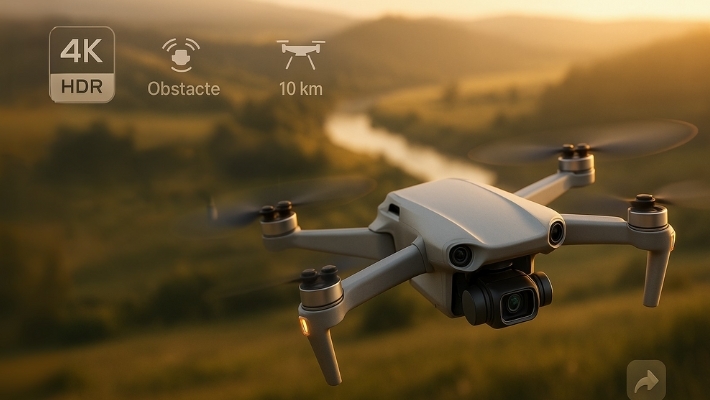
If your budget is flexible, even slightly, stepping into the ₹60,000–₹80,000 range can open up more professional-level features. Here’s what changes as you move up the price ladder.
1. Improved Camera Capabilities
Higher-priced drones like the DJI Mini 3 or Mini 4 Pro offer major upgrades such as:
- 4K video with HDR
- Vertical shooting for social media
- Dual native ISO for better low-light performance
- Advanced gimbal stabilization
Want a clear comparison between two bestsellers? Read DJI Mini 3 vs Mini 4 Pro – Which Combo Is Right for You?
2. Obstacle Avoidance Sensors
Most drones under ₹50,000 don’t come with obstacle sensors. But when you spend a bit more, you unlock features like:
- Forward and backward obstacle detection
- Automatic route correction
- Safer flying in complex environments
This matters a lot if you fly indoors, near trees, or in crowded areas.
3. Enhanced Flight Range and Stability
Premium drones usually support:
- Longer control range (up to 10 km in some models)
- Better wind resistance
- Smooth signal even in challenging terrains
This is especially useful for creators who shoot in open fields, hills, or near water bodies.
For those planning outdoor shoots or travel vlogs, check our blog Is Buying a Drone Enough to Start My Journey as a Content Creator?
4. Better App Integration and Pro Modes
When you spend more, you also get smarter apps that offer:
- MasterShots and QuickShots modes
- Waypoint flight planning
- Real-time editing suggestions
- Quick sharing for social media
These tools simplify storytelling for beginners and save a lot of editing time.
To see how smart apps can level up your drone experience, read What Is the DJI Fly App and Why It Matters for Creators
Do You Need a Drone License in India Under ₹50,000?
This is one of the most asked questions by first-time buyers. If you’re spending up to ₹50,000 on a drone, chances are you’re going for a lightweight, camera-friendly model. But do these come with paperwork? Let’s break it down.
It Depends on the Drone’s Weight
In India, drone regulations are primarily based on the weight category of the drone, not the price. Most drones in the under ₹50,000 range fall into the Nano or Micro category. Here’s what that means for you:
- Nano drones (under 250 grams):
No license needed, and you can fly them freely in most open areas. However, you still need to avoid no-fly zones like near airports, military bases, or government buildings. - Micro drones (250 grams to 2 kg):
These may need registration on the Digital Sky platform, and you’ll need permission to fly in controlled airspace. If you’re flying it for personal use and away from airports or restricted areas, it’s often fine. But for commercial use, you’ll need basic clearance.
Where You Fly Also Matters
Even a small drone can get you into trouble if flown in a restricted zone. So always check:
- Airspace category of your location
- No Drone Zones as defined by DGCA
- Whether the app shows your flight path as safe
You can use apps like Aarav Unmanned Systems or Akhil Systems to stay compliant with airspace rules.
Drone Rules in India: 2025 Snapshot
Here’s a basic table to simplify what you need to know.
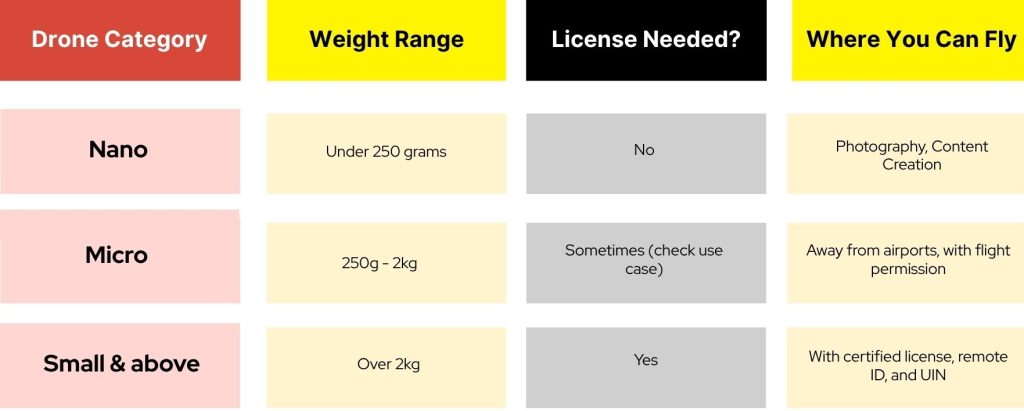
Want to understand drone rules more clearly? Our blog Can I Fly My Drone Freely or Do I Need a License? gives you a detailed yet beginner-friendly explanation.
How to Choose the Best Drone Under ₹50,000
If you’re spending up to ₹50,000, you want a drone that balances performance, ease of use, and camera quality. Here’s what you should focus on:
1. Camera Quality
Look for at least a 2.7K or 4K resolution with a stabilized gimbal. Even entry-level DJI models like the DJI Mini 2 SE offer great quality for vlogging and cinematic shots.
2. Flight Time
Aim for at least 20–30 minutes of flight time. Anything below that will limit your outdoor shoots.
3. Weight and Portability
Drones like the DJI Mini series are ultra-lightweight and don’t require licenses for recreational use, making them ideal for frequent travelers and casual creators.
4. GPS and Safety Features
Features like GPS return-to-home, obstacle sensors, and altitude hold are essential for beginners to avoid accidents.
5. App and Software Support
A good drone comes with a reliable mobile app that offers live view, flight logs, and creative flight modes. Make sure the brand you choose offers regular updates and after-sales support in India.
Final Thoughts: The ₹50,000 Drone Decision
You don’t need to break the bank to get started with drones. Whether you’re capturing your first travel vlog, learning aerial shots, or stepping into commercial content creation, the market in 2025 has excellent options under ₹50,000.
Most of these drones fall in the Nano category, which means fewer restrictions, less paperwork, and more freedom to fly. However, always be aware of DGCA drone rules and fly responsibly.
If you’re still exploring your options, check out these related blogs:

